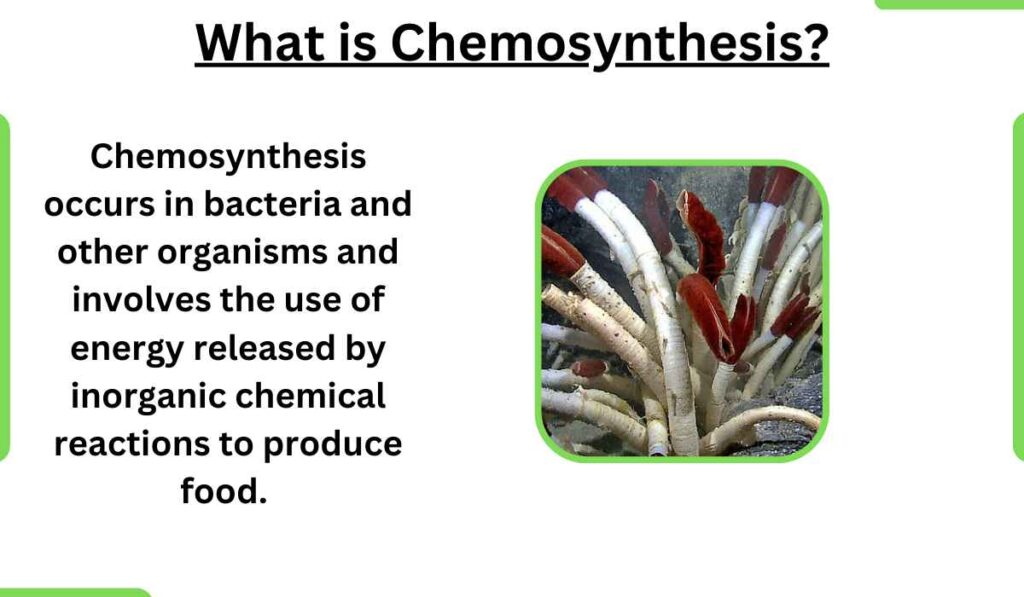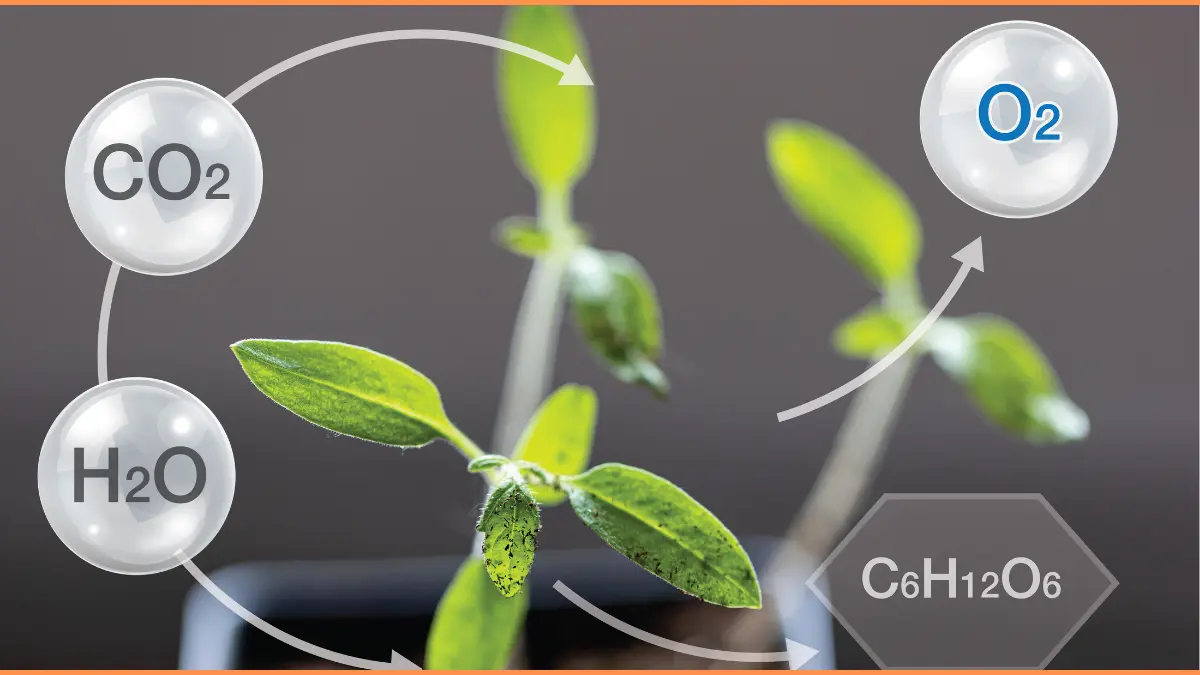Chemosynthesis-Definition, Process, and Examples
Chemosynthesis is a process that living organisms use to prepare their food. It is different from photosynthesis, where organisms use sunlight to produce food. Chemosynthetic organisms, on the other hand, utilize chemical compounds as a source of energy.

What is Chemosynthesis in Biology?
In Biology, chemosynthesis is a special process used by some living organisms to make their own food. Just like plants, these do not rely on sunlight to obtain energy. These organisms use the energy from breaking down certain inorganic or one-carbon compounds to produce organic compounds.
What is Chemosynthesis in Biochemistry?
In Biochemistry, Chemosynthesis is a process when living organisms make organic compounds (the building blocks of life) by using special one-carbon compounds and nutrients.
They get the energy for this process by breaking down certain inorganic or one-carbon organic molecules.
Occurance
Chemosynthesis takes place in the deep ocean and also at methane seeps. In these dark and deep parts of the sea, where sunlight cannot reach, scientists have discovered bustling areas known as hydrothermal vents, cold seep sites, and methane seeps. [source]
Instead of relying on sunlight, living organisms in these places use chemical energy to produce their own food through chemosynthesis.
This unique process enables them to survive in the lightless depths of the ocean.
Reactants and Products of Chemosynthesis
Reactants and products are a bit different from photosynthesis, where organisms use sunlight as source of energy.
Reactants of Chemosynthesis
In chemosynthesis, the energy source is not sunlight but certain inorganic molecules like hydrogen sulfide (H2S) and methane (CH4). The reactants required for chemosynthesis are carbon dioxide (CO2) and oxygen (O2).
From these reactants, the organisms produce organic compounds like sugars, as well as sulfur compounds or methane as products. It’s a cool process that allows these organisms to create their own food without needing sunlight.
Products of Chemosynthesis
The products of chemosynthesis are glucose, pure sulfur, and sulfur compounds. During chemosynthesis, bacteria living on the sea floor or within animals use energy stored in the chemical bonds of hydrogen sulfide and methane to produce glucose from water and carbon dioxide dissolved in seawater.
Along with glucose, pure sulfur and sulfur compounds are also created as by-products.
Process of Chemosynthesis
The process of chemosynthesis involves following steps:
1. Energy Source
Chemoautotrophs obtain their energy from specific inorganic molecules, such as hydrogen sulfide (H2S) or methane (CH4). They do not rely on sunlight like most plants do in photosynthesis.
2. Reactants
The key reactants required for chemosynthesis are carbon dioxide (CO2) and oxygen (O2).
3. Energy Conversion
The chemoautotrophs use the energy released from breaking down inorganic or one-carbon compounds to fuel the synthesis of organic compounds.
4. Organic Compound Production
With the energy obtained, the organisms convert carbon dioxide (CO2) and water (H2O) into organic compounds, such as glucose.
5. By-products
By-products like pure sulfur and sulfur compounds are also produced as part of the chemosynthesis process.
Independence from Sunlight
Unlike photosynthesis, which requires sunlight to generate energy, chemosynthesis allows these organisms to create their own food in absence of light, such as the deep ocean or extreme habitats like hydrothermal vents and cold seeps.
Example of Chemosynthesis
Here are few examples of Chemoautotrophs:
- Giant tube worms with bacteria near deep hydrothermal vents.
- Organisms in isolated caves.
- Methane clathrates environments.
- Whale falls. [source]
- Cold seeps
- Iron-oxidizing bacteria
- Manganese-oxidizing bacteria
- Methanogens
Latest Research about Chemosynthesis
- Scientists have discovered a rare chemosynthetic ecosystem called the ‘Big Blue Seep’ on the conical summit of Asùt Tesoru Seamount, Mariana Forearc, characterized by specially adapted animal species living around white carbonate crusts where fluid seepage occurs, revealing the second such ecosystem associated with serpentinite mud volcanism in the area. [1]
- Scientists have successfully prepared copper phyllosilicate nanotube (CuPSNT) catalysts and utilized them in the chemosynthesis of cyclohexane from phenol through the hydrodeoxygenation (HDO) reaction, achieving a high cyclohexane yield of 97.8% with complete phenol conversion. [2]
FAQs
Where does chemosynthesis occur?
Chemosynthesis occurs deep-sea hydrothermal vents, ocean floor cracks, and even around “black smokers” where hot, mineral-rich fluids emerge.

 written by
written by 




Leave a Reply